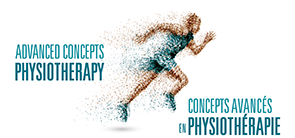| |
|
|
Acromioclavicular (AC)
Joint Separation
AC joint separation, or shoulder separation, is the partial or complete separation of two parts of the shoulder: the collarbone and the shoulder blade. These two parts are connected by the acromioclavicular (AC) joint. When the ligaments in the AC joint are stretched and torn, this leads to shoulder separation.
SYMPTOMS
• pain at the time of injury
• tenderness over AC joint (top of the shoulder)
• limited movement in the shoulder area due to pain
• swelling and bruising
• possibly deformity
How can physiotherapy help you?
Your physiotherapist will provide you with exercises to help strengthen the muscles that support the AC joint. Taping techniques are often used in the early phases of healing for added support. Muscle stimulation is another modality often used to help strengthen and re-‐train postural muscles. Following the exercise progressions and functional tasks your physiotherapist shows you is essential to aid in a full return to daily life.
Bicep Tendon Rupture (Tear)
As most people know, the bicep is the muscle in the front of your upper arm which helps you to bend at the elbow and rotate the arm. A partial or complete tear can occur in the bicep tendons, which is referred to as bicep tendon tear or rupture. Sometimes this condition is caused by one distinct injury and other times it comes from overuse where the tendons are overworked and slowly wear down or fray.
Possible risk factors include:
• aging
• heavy overhead lifting (i.e. excessive weightlifting activities)
• shoulder overuse
• smoking (harmful to tendon health)
SYMPTOMS
• sudden, sharp pain in upper arm
• possibly an audible snap or pop
• bicep cramping
• bruising from middle of upper arm toward elbow
• pain, tenderness, and weakness in shoulder or elbow
• difficulty turning palm of hand up or down
How can physiotherapy help you?
Your physiotherapist will show you exercises that will help strengthen and repair the bicep tendons. Practising the exercise progressions and functional tasks your physiotherapist shows you will be essential to help you return to work or sport!
Labral Tear or Rotator Cuff Tear
Much like Bicep tendon tears, labral tears and rotator cuff tears can be caused by a distinct accident or a combination of minor traumas to the area which wear down the tendons. Labral tears affect the labrum (a ring of cartilage which lines the outer edge of the socket) in the shoulder joint. These traumas can result in a full or partial tear in the tendons.
SYMPTOMS
• decreased range of motion in shoulder
• dull ache deep in the shoulder
• locking or catching sensation in shoulder joint
• disturbed sleep when lying on injured shoulder
• hard to comb hair or reach behind back
• arm weakness
How can physiotherapy help you?
Your physiotherapist will provide you with an exercise program to repair your damaged tendons and customize exercises to help you regain mobility in the shoulder. Ultrasound, acupuncture, and TENS are often used to help alleviate pain and speed up healing. Following and progressing through your exercise plan will be vital in regaining your pre-‐injury range of motion.
Lateral Epicondylitis (Tennis Elbow)
Lateral epicondylitis is most commonly referred to as tennis elbow, but that doesn’t mean only tennis players get this injury. Many repetitive gripping activities can lead to this common type of tendinitis which causes pain in the elbow and arm.
Common causes of tennis elbow include:
• tennis, racquetball, squash
• fencing
• weightlifting
• carpentry
• typing, painting, knitting
• raking
SYMPTOMS
• pain and tenderness in bony “knob” on the elbow
• pain may radiate into upper or lower arm
• increased pain when lifting, shaking hands, opening doors making a fist, gripping objects
or raising/straightening hand
How can physiotherapy help you?
offloading the tendon is essential in the proper healing of this injury. Your physiotherapist will show you how to properly offload the tendon and muscles as well as strengthen these muscles. Deep tissue massage, ultrasound, taping techniques, bracing, and acupuncture are modalities often use to aide in recovery.
Rotator Cuff Tendinitis
Rotator cuff tendinitis affects the tendons and muscles involved in moving the shoulder joint. This condition usually develops over time from wear and tear to the shoulder. This includes sleeping on the shoulder nightly, repeated activities in which the arm is stretched above the head, or keeping the shoulder in the same position for long periods of time. It is sometimes referred to as swimmer’s shoulder, pitcher’s shoulder, or tennis shoulder. These activities cause the tendons to become irritated and inflamed, leading to pain and loss of mobility.
SYMPTOMS
• pain and swelling in front of shoulder and side of arm
• increased pain when raising arm
• clicking sound when raising arm
• shoulder stiffness
• disturbed sleep from pain
• loss of mobility and strength in affected arm
How can physiotherapy help you?
After a thorough examination, your physiotherapist will show you exercises to help support your shoulder, improve your posture, and offload the affected muscles. Taping techniques, ultrasound, acupuncture, and TENS are often used to treat this injury as well. Posture bracing may also be prescribed to you if your physiotherapist is concerned about your posture. |
| |
|










